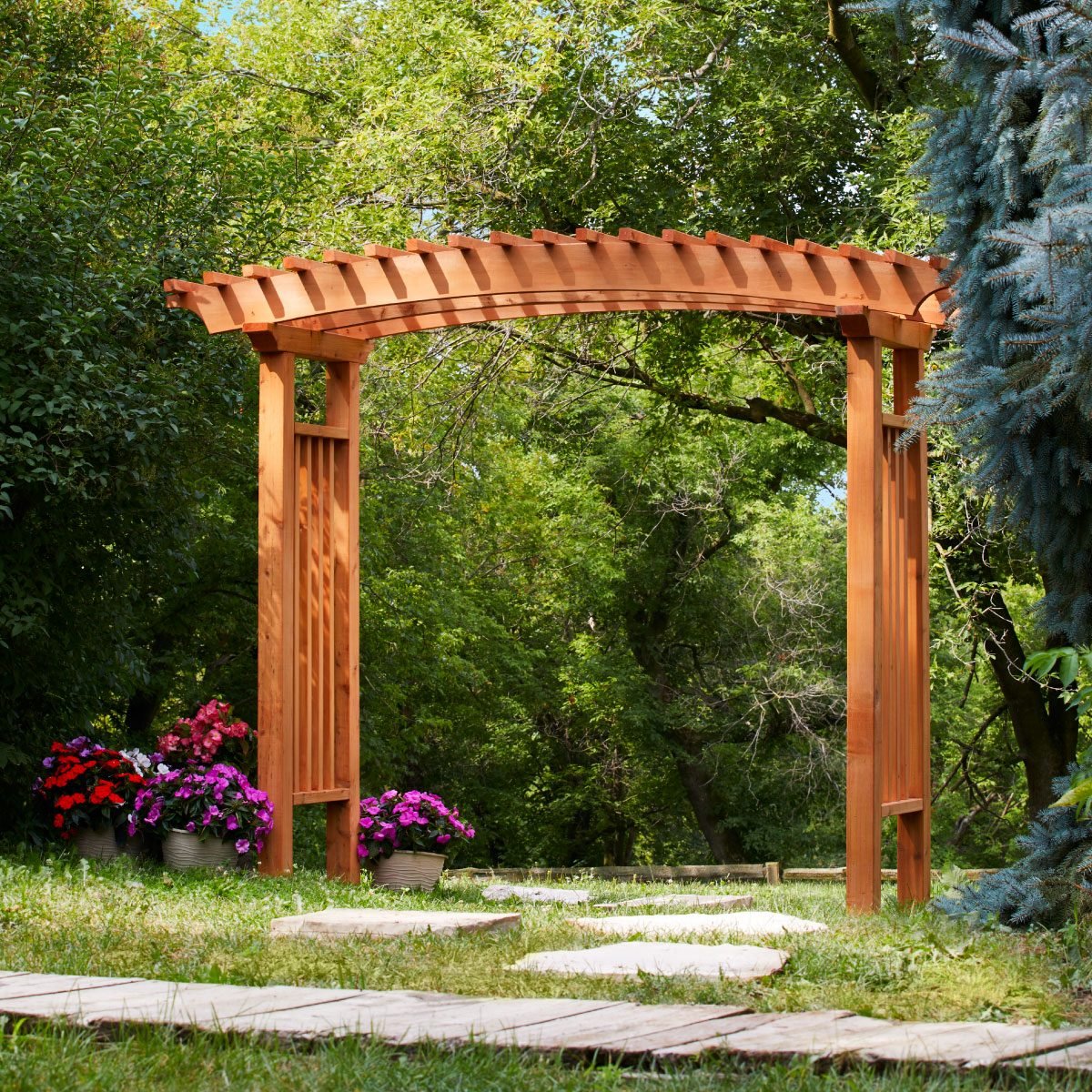


Create this stylish, arched DIY garden arbor in only a couple of days. It’s way easier than it looks.
![]()
Time
![]()
Complexity
![]()
Cost
Don't be intimidated by the look of this elegant garden arbor. You can build this and it will look great. Read on for our step-by-step DIY instructions.
This garden arbor may look like a challenging, weeks-long project, but it’s not. If you can drive screws and handle a saw, you can build it in a weekend. Don’t be afraid of those curves and coves; we’ll show you a goof-proof way to cut them.
Building and installing the arbor in your outdoor space takes about two days of work, but you’re best off spreading it over a three-day weekend. You can build it in a day, add a coat of finish the next morning, let it dry overnight and set up the arbor the following day.
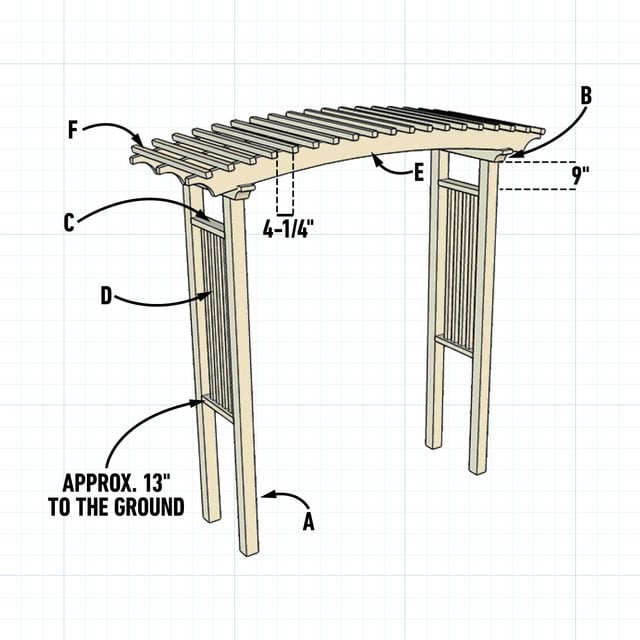
TMB STUDIO
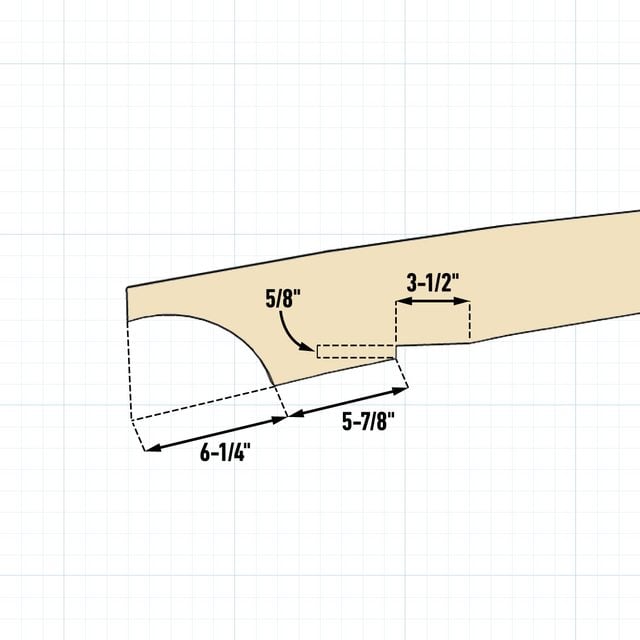
TMB STUDIO
Overall dimensions: Approx. 104-in. H by 107-in. W by 40-in. D.
| KEY | QTY. | PART | DIMENSIONS |
| A | 4 | Post | 3-1/2″ x 3-1/2″ x 96″ |
| B | 2 | Beam | 3-1/2″ x 3-1/2″ x 36″ |
| C | 4 | Rung | 1-1/2″ x 3-1/2″ x 18″ |
| D | 8 | Side slat | 1-3/8″ x 1-3/8″ x 47″ |
| E | 3 | Arch | 1-1/2″ x 11-1/4″ x 107″ |
| F | 19 | Top slat | 1-3/8″ x 1-3/8″ x 40″ |
Wear eye, dust and hearing protection when cutting, sanding or mixing concrete during the construction of this garden arbor. Make sure you’re familiar with the tools required and possess the necessary knowledge and confidence to use them in a safe and effective manner.
Align the blade’s arbor at the end of the beam (B) and mark at the front of the circular saw’s shoe. This mark tells you where to clamp the stop block to cut the cove.
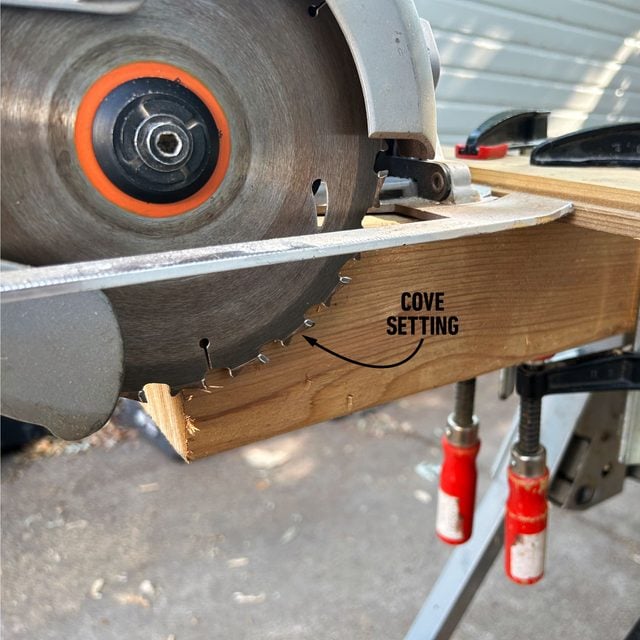
TMB STUDIO
Cut the beams (B) to length and cove the ends with a 7-1/4-in. circular saw. Pivot the saw downward while holding the shoe against the stop block.
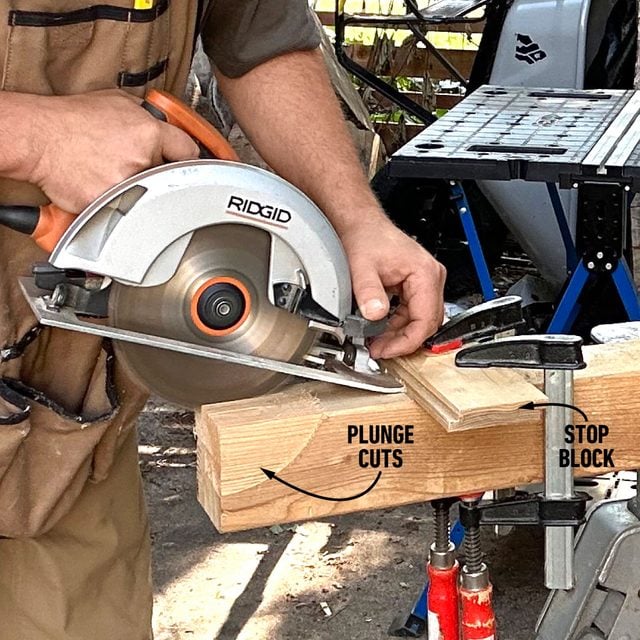
TMB STUDIO

Once you’ve made all the plunge cuts, cut out the waste with a mallet and a chisel.
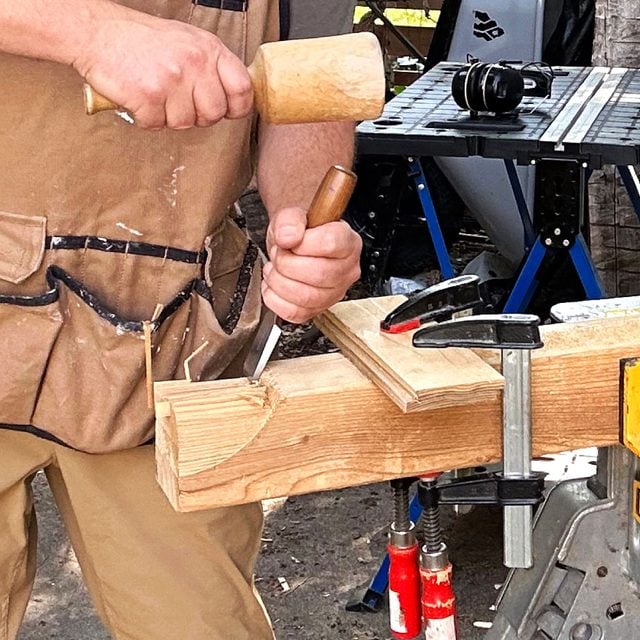
TMB STUDIO
After removing the waste, smooth the coves on the beams (B) smooth with a belt sander. The more plunge cuts you made, the easier it will be to smooth the cove.
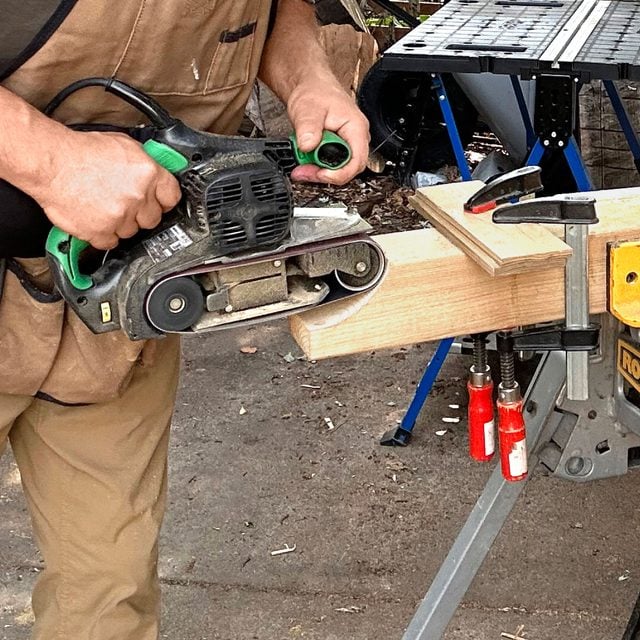
TMB STUDIO
Align and evenly space the side slats (D) between the rungs (C). Attach them with screws through the rungs. Next, drive screws at an angle through the rungs (C) and into the posts (A). Driving screws at an angle is a lot easier if you drill pilot holes first to guide the screws.
Fasten the beam (B) to the posts (A) with long six-inch construction screws. When you screw the beams to the posts, make sure the screw heads sink in flush with the surface so they’re not in the way when you set the arches (E) on them. Bore countersink holes if needed.
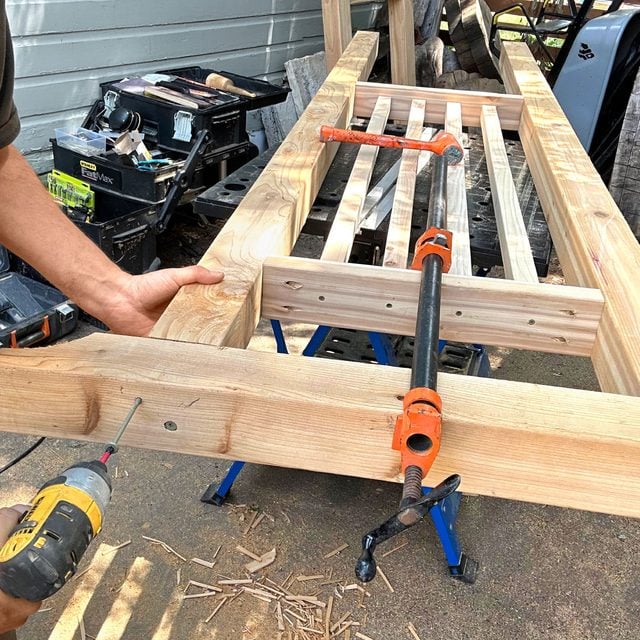 Align and evenly space the side slats" width="700" height="1024" />
Align and evenly space the side slats" width="700" height="1024" />
TMB STUDIO
Cut the 2×12 arch material to length and screw oversize blocks to the ends. Bend a spring stick between the blocks. A spring stick can be any piece of scrap wood 10 feet long with a consistent bend to it.
Trim the ends of the spring stick to decrease its arch. Once you’ve found an arch you like, trace the arch along the stick on the 2×12 material. Move the stick up six inches, then trace again.
Use the first arch (E) as a pattern for the other two. Mark the arch’s (E) end coves using the bottom of a five-gallon bucket as a radius.
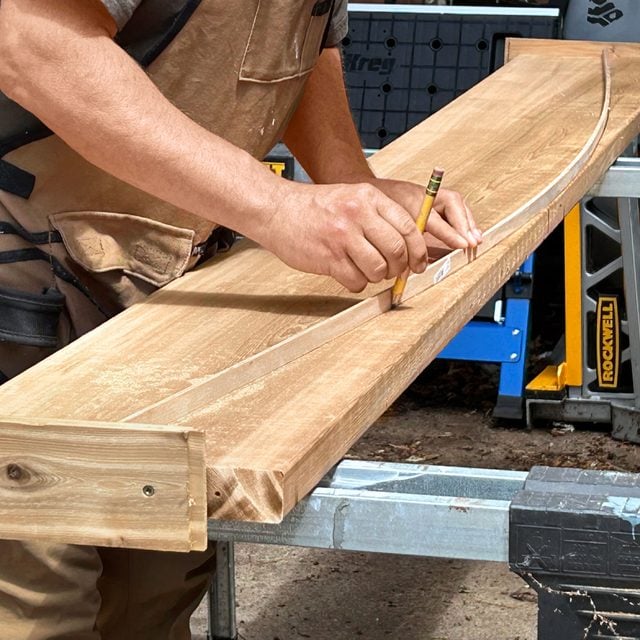
TMB STUDIO